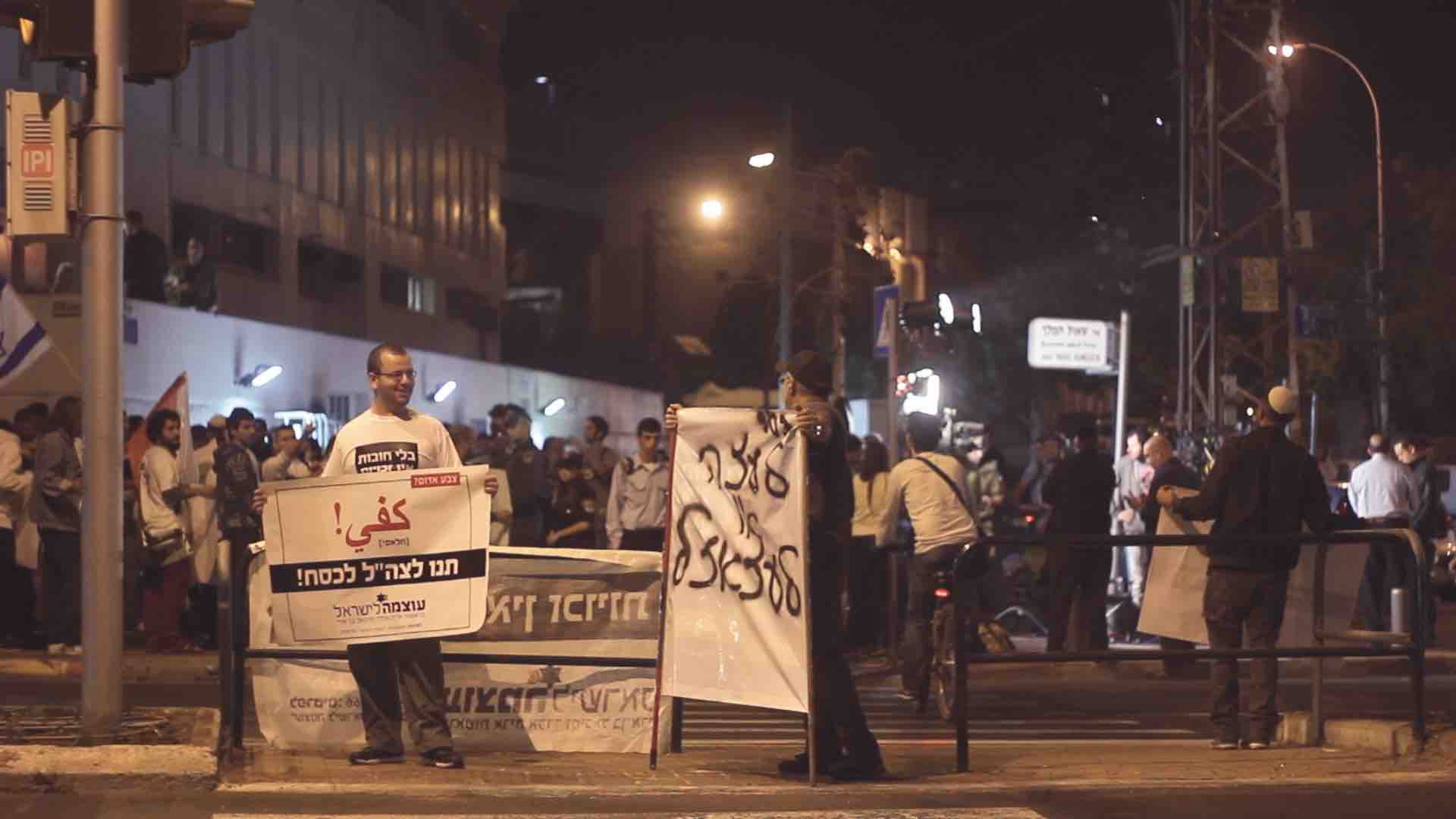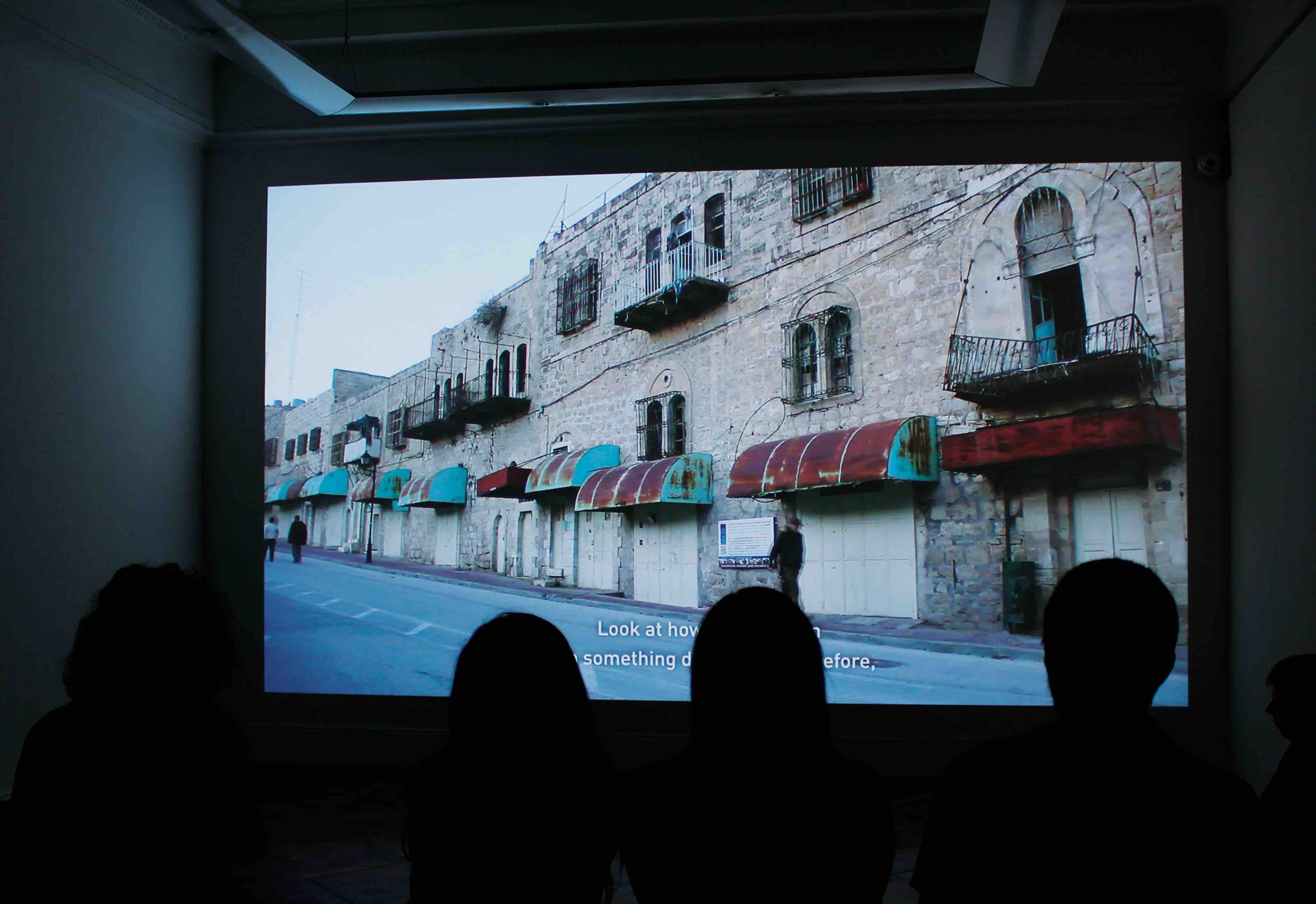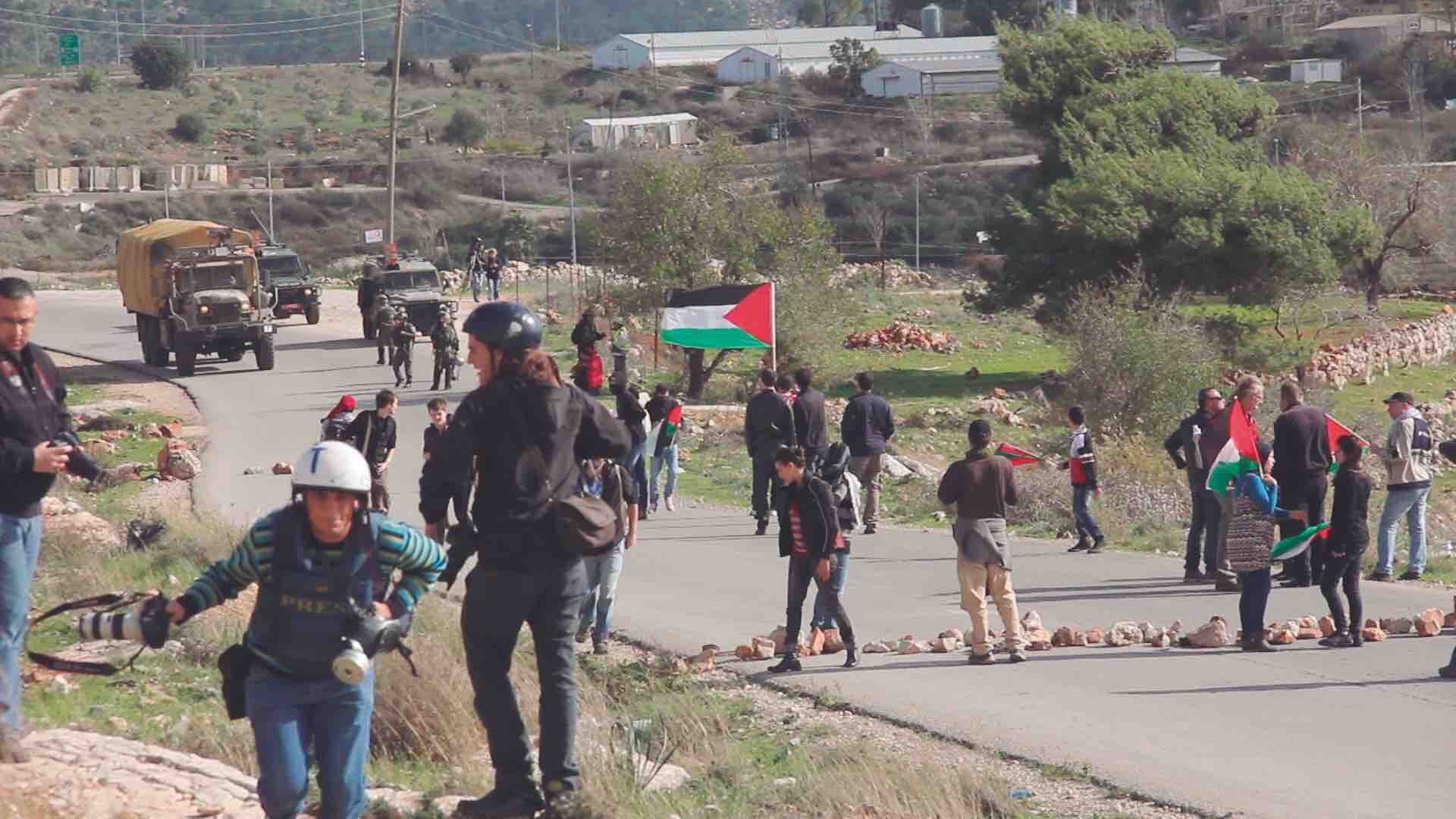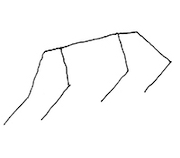IV. Migraciones, miradas de ida y vuelta
Quienes vivimos en Chile sabemos que la comunidad árabe local, en particular la palestina, es un colectivo prácticamente integrado a la vida nacional y a la vez constituye una de las identidades migrantes más visibles del país. A su vez, la historia que estos migrantes y sus descendientes han construido en Chile ya forma parte del imaginario colectivo nacional, desde el fútbol hasta las industrias, desde las comidas a sus locales comerciales. Y por cierto que una parte de ellos se vuelve particularmente visible en las manifestaciones de solidaridad con la causa palestina.
Lo cierto es que en Chile viven cientos de miles de descendientes de palestinos. No hay cifras oficiales, pero se calculan entre 300 y 800 mil. Lo que nadie discute es que en Chile existe la colectividad palestina más grande del mundo fuera del Medio Oriente. Se trata de un proceso que comenzó a fines del siglo XIX con un importante ciclo de inmigración árabe a Chile y América Latina. Se calcula que entre 1860 y 1900 unos 600 mil árabes abandonaron el Medio Oriente, de los cuales varias decenas de miles, a lo menos, terminaron en Sudamérica.
En un principio la mayoría se dedicó al comercio minorista y en Chile fueron conocidos genéricamente como «turcos», debido a que llegaban con el pasaporte del Imperio Otomano. Pero hacia 1940 la colectividad árabe ya sumaba unas 15 mil personas, entre los migrantes y sus descendientes, de las cuales la mitad eran palestinos y provenían fundamentalmente de las ciudades de Belén y Beit Jala. Por entonces, a pesar de que se reconocían como una colonia, ya se encontraban bastante más integrados en la sociedad chilena. La mayoría había pasado a formar parte de la clase media y algunos se habían enriquecido e ingresaban en la elite. Por los mismos años comenzaban a establecerse industrias textiles de capitales árabes, algunas de las que formarían luego verdaderos imperios económicos. Habían fundado también diarios y revistas y hasta el Club Deportivo Palestino, que hasta hoy es uno de los equipos de futbol más importantes de Chile, y que hace poco el presidente de la Autoridad Nacional Palestina reconoció como una suerte de segunda selección nacional. Tras la creación del estado de Israel hay un nuevo ciclo de migración palestina y hacia 1970 éstos constituían un 60% de los migrantes de origen árabe. Esta historia, por cierto, no ha acabado, como lo demuestra la llegada de 117 refugiados palestinos a Chile el año 2008.
Es por esta historia compartida entre Chile y Palestina que la operación que realiza Guendelman en el video Ana men Chile, tal vez el más ambicioso de los trabajos que presenta en Sin tierra, resulta mucho más que una arbitrariedad. Se trata de diecisiete secuencias cuidadosamente montadas de aproximadamente un minuto cada una, todas funcionando bajo la misma premisa básica. Son grabaciones tomadas en Cisjordania, en cámara fija de riguroso encuadre y generalmente con sonido directo. Pueden existir entre una y tres de estas grabaciones funcionando a la vez, como canales, en cada secuencia. La operación se completa con la adición a cada una del audio de una entrevista (un fragmento) realizada a un palestino o descendiente de palestino residente en Chile, a los cuáles se les invitó a pensar cómo imaginaban el futuro de Palestina.
Aparte de la cámara fija, las imágenes comparten una temporalidad particular. Cada cuadro es una suerte de trampa en la que se ha dejado ingresar un tiempo cotidiano, a diferentes tiempos en realidad. El tiempo aletargado de la espera en un check point, la aparente quietud de un suburbio visto desde lejos, la cadencia de los cantos y los cuerpos en una concentración callejera, el tiempo silenciosamente tenso de las armas en espacios cotidianos, el tiempo contemplativo del descanso de los beduinos, el tiempo fuera de la historia de los rebaños de cabras, el tiempo abandonado alrededor del muro.
Las voces de los entrevistados introducen otros tiempos y espacios, y también otras biografías. Guendelman entrevistó a intelectuales y comerciantes, jóvenes y viejos, nacidos en Chile y en Palestina. Algunos hablan desde el tiempo de la utopía futura, mientras otros escudriñan el pasado en busca de explicaciones y fundamentos. No pocos se posicionan en la contingencia del presente. También lo hacen desde diferentes perspectivas. Mientras algunos sueñan o ven inevitable la conciliación entre palestinos e israelíes, otro de los entrevistados sugiere que la única solución es sacar a todos los judíos de Palestina. Mientras algunos toman distancia analítica y establecen una perspectiva histórica y contextual, otros hablan desde sus recuerdos, emociones y biografías.
En el entendido que el conflicto palestino-israelí despierta posiciones antagónicas y argumentos encontrados en tantas personas, lo más estimulante de este video es que su compromiso es con lo verdadero, no con una verdad. No nos deja él una conclusión que podríamos aceptar o rechazar, ni nos propone discurso que aspira a convertirse en hegemónico, sino que nos entrega indicios de experiencias, tiempos y espacios irreductiblemente diferentes, y en tal sentido, verdaderos cada uno de ellos en su particularidad. Propicia, como diría el filósofo Emmanuel Lévinas, el encuentro con el otro en su alteridad (otredad), como un infinito irreductible, como una responsabilidad ética de sostener esa diferencia.

El título del video ―Ana men Chile― significa en árabe «yo soy de Chile», una frase que durante el viaje de Guendelman por Palestina le significó tomar una identidad que en varias ocasiones le permitió ganar confianzas entre palestinos e israelitas. Los primeros porque saben de sus compatriotas que han migrado y se han integrado en la sociedad chilena. Los segundos porque para ellos Chile, y la Patagonia en particular, es un objetivo turístico muy popular. Tal vez esta anécdota bien refleja el potencial de este video, pues las múltiples identidades y miradas que en él se despliegan pueden alcanzar diferentes rendimientos según cada contexto. Exhibido hoy en Chile, podemos pensar que este video trata de Palestina. Pero en otro tiempo o lugar, y aún hoy si tomamos la distancia suficiente, descubrimos que este video también habla de nosotros, de cualquier nosotros en cuanto identidad, pero especialmente de aquellos de nosotros que de algún modo nos identificamos como «chilenos», y de los horizontes de experiencia y pensamiento que nos permiten tomar esa y otras identidades o solidarizar con ciertas causas.
IV. Migrations, viewpoints on the way there and back
Those of us who live in Chile know that the local Arab community, the Palestinian community in particular, is a collective that has practically integrated itself into national life, and at the same time constitutes one of the country’s most visible immigrant identities. At the same time, the history constructed by these immigrants and their descendants in Chile already forms part of our collective national imagination, from soccer to industries, from food to commercial stores. And certainly, a part of this group becomes particularly visible during public demonstrations of solidarity with the Palestine cause.

The truth is that hundreds of thousands of Palestinian descendants live in Chile. There is no official data, but the estimated number is in between 300,000 and 800,000. What no one talks about is the fact that Chile has the world’s largest Palestinian community outside of the Middle East. This is the result of a process that began at the end of the XIX century with an important wave of Arab immigration towards Chile and Latin America. It is estimated that between 1860 and 1900, around 600,000 Arabs abandoned the Middle East, out of which at least several tens of thousands ended up in South America.
At first, most of these immigrants dedicated themselves to retail commerce, and in Chile, they were generically identified as turcos or “Turks”, due to the fact that they arrived with passports from the Ottoman Empire. But towards 1940, the Arab community consisted of around 15,000 members, including immigrants and their descendants, half of which were Palestinian and came mostly from the cities of Bethlehem and Beit Jala. By then, in spite of being recognized as a colony, they had integrated themselves more into Chilean society. Most of them had gone on to form part of the middle class, and some had made fortunes and gained access to the elite class. Around the same time, textile industries were established with Arab capital, some of which would later go on to become true economic empires. The Palestinians had also founded newspapers, magazines, and even Club Deportivo Palestino, which up until today is one of Chile’s most important soccer teams, and which not long ago was recognized buy the president of the Palestinian National Authority as a second national team of sorts. Following the creation of the state of Israel, there was a new wave of Palestinian migration, and towards 1970 these made up 60% of immigrants of Arab origin in Chile. Certainly, this story yet to reach its end, as demonstrated by the arrival of 117 Palestinian refugees in Chile in 2008.
It is because of this shared history between Chile and Palestine that the operation carried out by Guendelman in the video Ana men Chile, perhaps the most ambitious piece presented in No Land, turns out to be much more than just arbitrariness. It consists in seventeen carefully edited sequences of approximately one minute each, all of them functioning under the same basic premise. The material was filmed in the West Bank, with a rigorously framed fixed camera and generally accompanied by direct sound. Between one and three of these moving images may be played at the same time, like channels, in each sequence. The operation is completed by combining each sequence with the audio of an interview (a fragment) with a Palestinian or a person of Palestine descent residing in Chile, who was asked to share what he or she imagined for Palestine’s future.

Aside from the fixed camera, the images all share a particular temporality. Each frame is a trap of sorts into which everyday time has been allowed to enter, at different times in reality. The lethargic waiting period at a checkpoint, the apparent stillness of a suburb seen from a distance, the silently tense time of firearms in quotidian spaces, the Bedouin’s contemplative resting time, the unplaceable time of the goat herds, the abandoned time surrounding the wall. The interviewees’ voices introduce other times and spaces, as well as other biographies. Guendelman interviewed both intellectuals and merchants, the young and the old, those born in Chile and in Palestine. Some of them speak from the time of a future utopia, while others comb through the past in the search for explanations and rationales. Many of them position themselves on the current issues at hand, and others speak from different perspectives. Whilst some of them dream of or foresee an inevitable conciliation between Palestinians and Israelis, other interviewees suggest that the only solution is to remove all Jews from Palestine. Whilst some take an analytical distance and establish historical and contextual perspectives, others speak from their own memories, emotions and biographies.
In the understanding that the Palestine-Israeli conflict stirs up antagonistic positions and opposing arguments for so many people, the most stimulating element of this video piece is that it holds a compromise with what is true, and not with one single truth. It doesn’t leave us with a conclusion that we can accept or reject, neither does it propose a discourse that aspires for hegemonic status. Instead, it gives us indications of experiences, times, and places that are indomitably different, and in this sense, true to each particular character. This enables, as the philosopher Emmanuel Lévinas would say, the encounter with another in his or her otherness, as an indomitable infinite, as an ethical responsibility of maintaining this difference.
The title of the video —Ana men Chile— is Arabic for “I am from Chile”, a phrase that throughout Guendelman’s travels in Palestine meant the assumption of an identity that allowed him to gain confidence with both Palestinians and Israelis on several occasions: the former, because they know that their compatriots have migrated and integrated into Chilean society; the latter, because to them Chile, and Patagonia in particular, is a very popular tourist destination. Perhaps this anecdote reflects this video’s potential, for the multiple identities and perspectives displayed in it may yield different returns according to each context. Exhibited today in Chile, we may think that this video is about Palestine. But in another time or place, and even today if we take enough distance, we may discover that this video also speaks about us, about any of us in terms of identity, but especially about those of us that somehow identify ourselves as “Chileans”, and of the horizons of experience and thought that allow us to assume that and other identities or to show solidarity towards certain causes.

